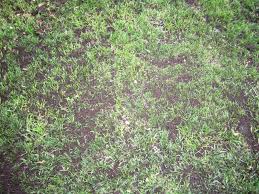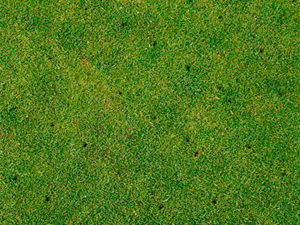Over time, the soil beneath your lawn will move and settle, leaving you with hills, hollows and undulations. Here are some tips from Turf Works Professional Landscaping to help you knock those uneven spots out of your lawn.
To get that perfect fairway-green look for your own lawn, the surface of your lawn must be smooth. It does not matter if your lawn slopes slightly to help with drainage, but it must be free from bumps and lumps!
There are more than just aesthetic benefits to having an even and graded lawn! You’ll find too, that a bumpy lawn can lead to a myriad of problems with mowing. The “high” parts of the lawn are more likely to be scalped by the mower. Not only will this blunt your blades, it opens up the sward to let in weeds and diseases.
In contrast, dips in the lawn become obvious when the grass within them is slightly longer than the rest of the lawn. There’s a noticeable difference in color, and it can create areas where excess water can pond creating additional issues.
First things first, why do I have an uneven lawn?
In North Carolina (and specifically the Raleigh area) we have varying types of soil. But, soil is amazing! Within the relatively small area of your lawn there can be several areas with different soil types. Maybe there’s a mineral seam running through the lawn, or an old river bed. Perhaps parts of the lawn have been used for different things in the past.
Because of these different features, it can cause these different features in the soil. With that said, it’s perfectly normal for a lawn to develop gentle bumps over time. Especially if there are tree roots running underneath it or if one area gets more use than another. The simplest way of leveling out dips is to top dress with a very fine sand.
Ok! What’s top dressing?
Topdressing is something that is carried out regularly by the best golf clubs and communities. The greens keepers apply a thin layer of finely graded sand or soil to the top of the grass and work it down towards the roots. The main purpose of it in this context is to create the perfect playing surface. But it can also help to control thatch, weeds and diseases.
For a domestic lawn, topdressing is the perfect way to smooth out the surface of your lawn without going to the trouble of a more costly outdoor project like installing a whole new lawn!
Simply distribute the topdressing material around your lawn then work it into the sward using a broom or the back of your rake. You could even use a blower provided it’s switched onto its lowest setting (be careful not to blow it everywhere!).
A Note about selecting the right materials:
Topdressing with a sand-soil mix is something that needs great care. You’ll find it described in many a lawn care book but in reality, it’s not as practical as they make it sound. Green keepers prefer to use an inert substance – like sand. Introducing soil from an unknown source can also bring in weed seeds. If you are planning on re-seeding after topdressing, use a really good quality sand-soil mix from a reputable supplier.
Tips for Top Dressing (and lawn leveling!).
- Topdressing is best done between March and October – when the grass is actively growing
- Choose a dry day
- Never top dress a lawn that is frozen or waterlogged
- Choose topdressing materials wisely
- Time your top dressing so that it doesn’t interfere with other lawn treatments. Ideally fit it mid-way between scarification or aeration treatments
- Avoid top dressing when your lawn is stressed by drought or disease
- Do not bury the grass completely. You should be able to see grass blades sticking up above the topdressing.




